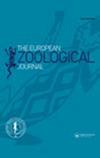Bibliometric ups and downs
引用次数: 0
Abstract
Bibliometrics is the science that, among other issues regarding books, articles and other publications, analyzes the performance of scientific journals. The Impact Factor (IF) is the most popular measure of the influence of a journal, and its size is usually used to rank tribunes. If the IF is large, the journal is good. Just as with the hopes of economists, with GDP and other economical paraphernalia, the expectation is that the IF grows every year, and we editors anxiously wait for the publication of the IF by the Institute for Scientific Information. This year our IF decreased a little bit, from 0.865 to 0.761. As Editor-in-Chief, I should commit hara-kiri! Another metric, however, savedmy life. It is the Cited Half-Life (CHL). Never heard about it? The IF measures how much the articles are cited three or five years after publication. The CHL measures for how long the articles keep being cited. I am proud to tell you that the CHL of the Italian Journal of Zoology reached >10 this year. We never had such result. This is the top value of this measure: it means infinity. So, our articles are now more or less immortal. Maybe they will not be cited much soon after publication, but they will not disappear from the radar of those who study zoology, according to this bibliometric measure. What is more important? The IF or the CHL? The answer is clear: the IF. Nobody cares about the CHL, so why bother? I suggest a little study. Inspect the rankings of the journals in the various disciplines and order them according to either IF or CHL. You will be surprised. Usually, the larger the IF the smaller the CHL, and vice versa. The papers that appear in highly impacting journals, with due exceptions, are rapidly forgotten. They are worth gold as soon as they are out, but their value decays very rapidly. The reason is that there are ‘rapidly evolving’ disciplines, and there are others that evolved already. In this case, rapidly evolving might be expressed also with ‘rapidly decaying’ disciplines, since their highly impacting articles are soon forgotten. Our problem is not the IF – those who have it large are right in praising their size – but we should not be ashamed by our size, we have other resources to counterbalance this poor measure. Our problem is that we are not even aware that CHL exists, and this leads to inferiority complexes in respect to other disciplines. They have such a large IF, and ours is so tiny! Maybe it might be wise to merge these two values and find a cumulative index that considers both aspects. Something like IF × CHL. But if you multiply a tiny number for infinity (CHL >10 is infinity) you have infinity. Whereas if you multiply a huge number for a number that is not infinity, the cumulative index is lower than infinity. I fear that the guys who practice disciplines with tiny CHL would not like this measure. That’s why they do not care about CHL. As usual, the fault is ours: we should care about CHL much more than about the IF. We developed an inferiority complex generated by the size of our IF, and did not realize that, in those bibliometric columns, there is also the CHL. And that our scores are not so bad, as a whole discipline. Now it is our duty to defend our reputation and keep asking that the CHL is considered together with the IF. The publishers, in the web pages of the journals, report only about the IF. They should report also the CHL values. We have evolved already, and we have a solid background on which to base our research. There will be exciting novelties also in zoology, of course, but they will probably be less triumphant than those of other disciplines. They will, however, last for much longer a time. Be proud to be a zoologist!文献计量学起伏不定
文献计量学是一门科学,在有关书籍、文章和其他出版物的其他问题中,分析科学期刊的表现。影响因子(IF)是衡量期刊影响力的最常用指标,其大小通常用于对论坛进行排名。如果影响因子较大,说明期刊质量好。正如经济学家对GDP和其他经济指标的期望一样,人们期望IF每年都在增长,我们编辑们焦急地等待着科学信息研究所(Institute for Scientific Information)发布IF。今年我们的IF下降了一点,从0.865降到0.761。作为总编辑,我应该切腹自杀!然而,另一个指标救了我的命。它是引用半衰期(CHL)。没听说过吗?影响因子衡量的是文章发表三到五年后被引用的次数。CHL衡量的是文章被引用的时间。我很自豪地告诉大家,今年《意大利动物学杂志》的CHL达到了>10。我们从未有过这样的结果。这是这个测度的最大值,它意味着无穷大。所以,我们的文章现在或多或少是不朽的。也许它们在出版后不久就不会被大量引用,但根据这种文献计量方法,它们不会从研究动物学的人的雷达上消失。哪个更重要?IF还是CHL?答案很明确:IF。没人关心CHL,那又何必呢?我建议学习一下。检查各学科期刊的排名,并根据IF或CHL排序。你会大吃一惊的。通常,中频越大,CHL越小,反之亦然。出现在极具影响力的期刊上的论文,除了适当的例外,很快就被遗忘了。它们一出来就值黄金了,但它们的价值衰减得很快。原因是有“快速发展”的学科,也有其他已经发展的学科。在这种情况下,快速发展也可以用“快速衰退”的学科来表达,因为它们极具影响力的文章很快就被遗忘了。我们的问题不在于“如果”——那些拥有“如果”的人赞美自己的“如果”是对的——但我们不应该为自己的“如果”感到羞耻,我们有其他资源来抵消这种糟糕的衡量标准。我们的问题是,我们甚至没有意识到CHL的存在,这导致了对其他学科的自卑情结。他们的IF那么大,而我们的IF那么小!也许合并这两个值并找到一个同时考虑这两个方面的累积索引是明智的。比如IF × CHL。但是如果你用一个很小的数乘以无穷大(CHL >10是无穷大)你就得到无穷大。然而,如果你用一个大数乘以一个非无穷大的数,累积指数就会小于无穷大。我担心那些用微小的CHL练习纪律的人不会喜欢这个措施。这就是为什么他们不关心CHL。和往常一样,是我们的错:我们应该更关心CHL而不是IF。我们产生了一种由IF的大小产生的自卑情结,并没有意识到,在这些文献计量列中,也有CHL。我们的分数也不是很差,就整个学科而言。现在,我们有责任捍卫我们的声誉,并继续要求将CHL与IF一起考虑。在期刊的网页上,出版商只报道IF。他们也应该报告CHL值。我们已经进化了,我们有坚实的背景作为我们研究的基础。当然,动物学也会有令人兴奋的新奇事物,但它们可能不会像其他学科那样得意洋洋。然而,它们将持续更长的时间。为自己是一名动物学家而自豪!
本文章由计算机程序翻译,如有差异,请以英文原文为准。
求助全文
约1分钟内获得全文
求助全文

 求助内容:
求助内容: 应助结果提醒方式:
应助结果提醒方式:


